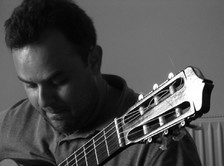
Evis Sammoutis (Cyprus) holds a PhD in Music Composition from the York University where he studied with Thomas Simaku. He continiued his studies at IRCAM, Darmstadt, Voix Nouvelles and Tanglewood with Georges Aperghis, George Benjamin, Brian Ferneyhough and Helmut Lachenmann. He is currently a Fulbright Scholar at Boston University on a sabbatical from The European University Cyprus, where he serves as associate professor of Music. He also taught at York, Nottingham and Hull universities.
His works have been commissioned by festivals and organisations such as the Venice Biennale, Klangspuren, Royaumont and ARD, and performed in more than 30 countries at venues and festivals such as The Purcell Room, Konzerthaus Berlin, MusicNOW, Gaudeamus Music Week, BachFest in Leipzig, TransArt and the ISCM Festivals. His compositions have also been broadcast such as BBC Radio 3, (United Kingdom), Deutschlandradio, SWR2, Deutsche Welle and ARD (Germany), Rai 3 (Italy), RTP (Portugal) and KBS1 (South Korea).
His music has been performed by major performes, ensembles and orchestras such as The Ensemble Modern, Les Percussions de Strasbourg, The London Symphony Orchestra, Irvine Arditti, Rohan de Saram and Peter Sheppard Skaerved, and conductors Frank Ollu, Elgar Howarth, Kasper de Roo and Christoph Poppen.
He was awarded prizes at many competitions, including The Royal Philharmonic Society Award, The 5th Jurgenson International Competition, The Franz Liszt Scholarship, The Irino Prize, The Andres Segovia Prize and the 5th Concours Dutilleux.
Ταυτοφωνία – Taftophonia
Taftophonia was composed for David Alberman who gave its world premiere at the Wapping Hydraulic Power Station as part of SPNM’s Solo Spotlights Series in 2007, a month before Peter Sheppard Skaerved gave its secind London performancies at the Royal Academy of Music as part of a portrait concert of the composer. The title means unison in English, and the work is written for a violinist, rather than a violin, aiming to create a synthesis between the performer’s gesture, voice and instrumental part. The “vocal” part consists of a number of effects; predominantly whistling, humming and tongue clicks. Each of these effects is paired with sounds from the violin that share similar timbral characteristics (such as specific harmonic positions rich in overtones, precise control of vibrato, bow pressure and position of the bow on the string and col legno battuto, to name but a few). The composer’s intention for this work was to create one fused sound, one unified expression of taftophonia where the listener cannot hear or see any separation between what the performer plays as a violinist and what he/she “sings” as a person.


